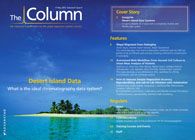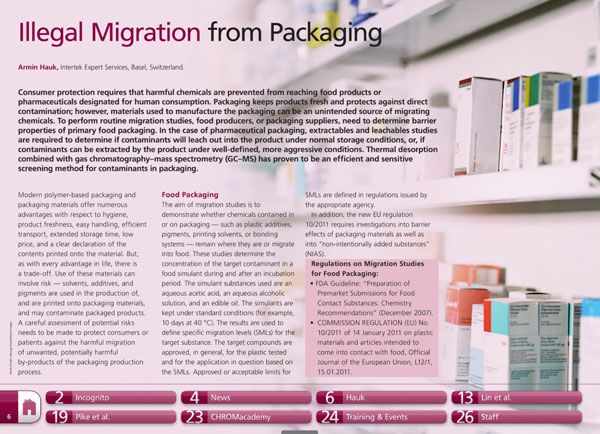Illegal Migration from Packaging
Consumer protection requires that harmful chemicals are prevented from reaching food products or pharmaceuticals designated for human consumption. Packaging keeps products fresh and protects against direct contamination; however, materials used to manufacture the packaging can be an unintended source of migrating chemicals. To perform routine migration studies, food producers, or packaging suppliers, need to determine barrier properties of primary food packaging.
Consumer protection requires that harmful chemicals are prevented from reaching food products orpharmaceuticals designated for human consumption. Packaging keeps products fresh and protects against directcontamination; however, materials used to manufacture the packaging can be an unintended source of migratingchemicals. To perform routine migration studies, food producers, or packaging suppliers, need to determine barrierproperties of primary food packaging. In the case of pharmaceutical packaging, extractables and leachables studiesare required to determine if contaminants will leach out into the product under normal storage conditions, or, ifcontaminants can be extracted by the product under well-defined, more aggressive conditions. Thermal desorptioncombined with gas chromatography–mass spectrometry (GC–MS) has proven to be an efficient and sensitivescreening method for contaminants in packaging.

Regulatory Deadlines and Supply Chain Challenges Take Center Stage in Nitrosamine Discussion
April 10th 2025During an LCGC International peer exchange, Aloka Srinivasan, Mayank Bhanti, and Amber Burch discussed the regulatory deadlines and supply chain challenges that come with nitrosamine analysis.













